Identification of a miRNA based model to detect prognostic subgroups in patients with aggressive B-cell lymphoma
To distinguish prognostic subgroups patients with aggressive B cell lymphoma, we analyzed 800 MIRNAS’s expression with Nanostring NCounter Micna Mirna Test on cohort 228 FFPE samples of patients registered in the Ricover-60 trial and megachoep. We identify significant Mirna signatures for the overall survival (OS) (OS) and progressive free survival (PFS) with linear cox regression punished by Laso. The level of high expression of the MIR-130A-3P and MIR-423-5P shows a better prognosis, while the high level of MIR-374B-5P, MIR-590-5P, MIR-186-5P, and MIR-106B-5P-5P increases Patients’ risk level for OS.
Regarding the PFS high expression MIR-365A-5P In addition to two other MIRNAS increases the prognosis and high level of MIR374A-5P, MIR-106B-5P, and MIR-590-5P, connected with an increased risk and poor prognosis. We identified the signature of Mirna to divide patients into two different risk groups. This prognostic model can be used in risk stratification in clinical trials in the future and helps make personalized therapeutic decisions.
Comparative analysis of transcript profile, proteome, and mirna cupffer cells and monocytes
The macrophage population in most mammalian organs consists of different origin cells. The macrophage of the population comes from the erythromiseloid precursor of the wall of the egg yolk bag; Maintenance of the amount of macrophages in the postnatal ontogenesis is practically independent of the hematopoiesis bone marrow. The largest population of the population of embryonic population is found in the central nervous system (Mikroglia) and the liver (Cell Cupffer). Conversely, dermis and mucous membranes become largely colonized by monocytes of bone marrow derivatives which show clear and phenotical plasticity.
In this study, we compare cupffer cells and monocytes using immunofenotype, gene expression profiles, proteome, and microrna collections. The observed difference does not consider the macrophage of the residents’ hearts as pure m2 macrophages or the situation owned by a monocyte has a pure M1 feature. Monocytes show signs of high plasticity and sensitivity to the pattern of molecules related to pathogens (for example, high transcription rates for <i> TLR 2 </ i>, <i> 4 </ i>, <i> 7 </ i>, and <i> 8 </ i>). Conversely, the macrophage of the Heart of the population is clearly involved in the regulations of certain organ functions (nitrogen metabolism, a complementary system protein synthesis).
PMDNE: Prediction of the Mirna-Disease Association based on network embedding and network similarity analysis
Prediction of success from the Mirna-Disease Association is nontrivial for the diagnosis and prognosis of genetic diseases. There are many methods for predicting mirna and disease, but many biological data and complex, and they are often in network form. Ways to accurately use MIRNA features and biological tissue related to diseases to predict unknown associations always become a challenge. Here, we propose PMDNE, a method based on network embedding and network similarity analysis, to predict Mirna’s associations.
At PMDNE, the structure of bipartite graphics network is improved, and the generator runs randomly designed. For embedded vectors, 128 dimensions are used, and predictive accuracy increases significantly. Compared to other network embedding methods, PMDNE is comparable and competitive with the method of art conditions. The method we can solve features extraction features, reduce the dimensions of features, and increase the efficiency of predictions of mirna-disease associations. This method can also be extended to other areas for biomedical tissue predictions.
Effect of lifestyle factors on mirna expression and signal paths: reviews
The term ‘lifestyle’ includes various factors that contribute to maintenance of good health status. Increased evidence shows that lifestyle factors can affect epigenetic mechanisms, such as MIRNAS’s expression. MIRNA dysregulation can modify gene expression and molecular pathways that can cause functional changes. This review summarizes human studies that highlights that diet, physical activity, smoking consumption and alcohol can affect the Mirna engine and some biological functions.
Most Mirnas are involved in molecular lines that affect inflammation, cell cycle regulations and carcinogenesis produce onset or the development of pathological conditions. Investigating this interaction will be very important to understand the etiology of the pathological process, the potential for new care strategies and to prevent disease.
From the Mirna target network to the Mirna function: MIR-375 can regulate apoptosis and dynamics of actin in the heart muscle through the path that depends on RHO-GTPASES
Micrornas (MIRNAS) is a short ribonucleic acid molecule (RNA), without code, which is involved in the main biological process regulations, such as apoptosis or proliferation and cell differentiation, through specific interactions of sequences with the MRNAS target. In this study, we propose workflows to predict the MIRNA function by analyzing their target gene network structure. This workflow is applied to study the functional role of the MIR-375 in the heart of the muscle (myocardium), because Mirna previously proved to be associated with heart disease, and the data on its functions in myocardium was largely unclear.
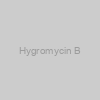 Hygromycin B |
|
abx184120-1g |
Abbexa |
1 g |
EUR 360 |
|
|
 Hygromycin B |
|
A2515-200 |
ApexBio |
200 mg |
EUR 40 |
|
|
|
Description: Suitable for mammalian cell selection |
 Hygromycin B |
|
A2515-5.1 |
ApexBio |
10 mM (in 1mL DMSO) |
EUR 129.6 |
|
Description: Hygromycin B is a selective antibiotic.Antibiotics are a type of antimicrobial used in the treatment and prevention of bacterial infection.Hygromycin B is an antibiotic that is effective on most bacteria, fungi and higher eukaryotes. |
 Hygromycin B |
|
A2515-500 |
ApexBio |
500 mg |
EUR 64 |
|
|
|
Description: Suitable for mammalian cell selection |
 Hygromycin B |
|
H007-1G |
TOKU-E |
1 g |
EUR 61.03 |
|
|
|
Description: C20H37N3O13 |
 Hygromycin B |
|
H007-500MG |
TOKU-E |
500 mg |
EUR 33.38 |
|
|
|
Description: C20H37N3O13 |
 Hygromycin B |
|
H007-5x1G |
TOKU-E |
5 x 1 g |
EUR 251.2 |
|
|
|
Description: C20H37N3O13 |
 Hygromycin B |
|
G265 |
ABM |
1.0 g |
EUR 350 |
|
Description: Hygromycin B is an aminoglycoside produced by Streptomyces hygroscopicus bacteria. This antibiotic kills fungi, bacteria, and even eukaryotic cells by blocking protein synthesis. Hygromycin B is often used in order to select for and sustain eukaryotic and prokaryotic cells that contain the hygromycin resistance gene. |
 Hygromycin B |
|
abx082491-100l |
Abbexa |
100 µl |
EUR 337.5 |
 Hygromycin B |
|
abx082491-1ml |
Abbexa |
1 ml |
Ask for price |
 Hygromycin B |
|
abx082491-200l |
Abbexa |
200 µl |
Ask for price |
 Hygromycin B, 1g |
|
R3128-1g |
ACTGene |
each |
EUR 362.4 |
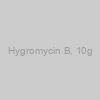 Hygromycin B, 10g |
|
R3128 |
ACTGene |
10g |
EUR 1918.7 |
|
|
 Hygromycin B, 10g |
|
R3128-10g |
ACTGene |
each |
EUR 2724 |
) Hygromycin B (HRP) |
|
abx284211-100g |
Abbexa |
100 µg |
Ask for price |
) Hygromycin B (HRP) |
|
abx284211-20g |
Abbexa |
20 µg |
EUR 475 |
) Hygromycin B (HRP) |
|
abx284211-50g |
Abbexa |
50 µg |
Ask for price |
 HYGROMYCIN B SOLUTION |
|
30-240-CR |
CORNING |
20 mL/pk |
EUR 188.4 |
|
Description: Media Catalog; Cell Culture Reagents |
 Hygromycin B Antibody |
|
abx342220-100l |
Abbexa |
100 µl |
EUR 4500 |
 Hygromycin B Antibody |
|
abx342220-50l |
Abbexa |
50 µl |
EUR 900 |
 EZSolution? Hygromycin B |
|
2590-20 |
Biovision |
each |
EUR 326.4 |
 Hygromycin B Concentrated |
|
H001-1MU |
TOKU-E |
1 MU |
EUR 58.67 |
|
|
|
Description: C20H37N3O13 |
 Hygromycin B EvoPure® |
|
H010-1G |
TOKU-E |
1 g |
EUR 141.32 |
|
|
|
Description: C20H37N3O13 |
 Hygromycin B EvoPure® |
|
H010-500MG |
TOKU-E |
500 mg |
EUR 101.88 |
|
|
|
Description: C20H37N3O13 |
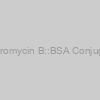 Hygromycin B::BSA Conjugate |
|
40810006-1 |
Glycomatrix |
5 mg |
EUR 198.58 |
 Hygromycin B::BSA Conjugate |
|
40810006-2 |
Glycomatrix |
20 mg |
EUR 354.14 |
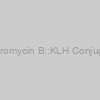 Hygromycin B::KLH Conjugate |
|
40810007-1 |
Glycomatrix |
5 mg |
EUR 215.83 |
 Hygromycin B::KLH Conjugate |
|
40810007-2 |
Glycomatrix |
20 mg |
EUR 354.14 |
) Hygromycin B Gold (solution) |
|
ant-hg-1 |
InvivoGen FR |
1 g (10 x 1 ml) |
EUR 144.9 |
) Hygromycin B Gold (solution) |
|
ant-hg-2 |
InvivoGen FR |
2 g (20 x 1 ml) |
EUR 248.85 |
) Hygromycin B Gold (solution) |
|
ant-hg-5 |
InvivoGen FR |
5 g (1 x 50 ml) |
EUR 460.95 |
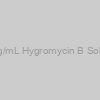 50mg/mL Hygromycin B Solution |
|
PB180126-10mL |
Elabscience Biotech |
10 mL |
EUR 88 |
|
Description: Supplements & Reagents |
 50mg/mL Hygromycin B Solution |
|
PB180126 |
Elabscience Biotech |
10mL |
EUR 88 |
|
|
|
Description: Antibiotics |
) Hygromycin B EvoPure (Low Endotoxin) |
|
H024-1G |
TOKU-E |
1g |
EUR 456.05 |
|
|
|
Description: C20H37N3O13 |
) Hygromycin B EvoPure (Low Endotoxin) |
|
H024-500MG |
TOKU-E |
500 mg |
EUR 281.78 |
|
|
|
Description: C20H37N3O13 |
) Hygromycin B Solution (Low Endotoxin) |
|
H026-20ML |
TOKU-E |
20 mL |
EUR 77.55 |
|
|
|
Description: C20H37N3O13 |
 Hygromycin Antibody |
|
abx023698-1mg |
Abbexa |
1 mg |
EUR 1312.8 |
|
|
 Hygromycin Antibody |
|
abx023699-1mg |
Abbexa |
1 mg |
EUR 1312.8 |
|
|
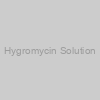 Hygromycin Solution |
|
Hygro-anti |
GenTarget |
1.0 ml (50 mg/ml) |
EUR 70 |
|
Description: Hygromycin antibiotic selection solution in PBS |
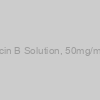 Hygromycin B Solution, 50mg/mL, Sterile |
|
40810004-1 |
Glycomatrix |
25 mL |
EUR 80.99 |
 Hygromycin B Solution, 50mg/mL, Sterile |
|
40810004-2 |
Glycomatrix |
50 mL |
EUR 150.08 |
 Hygromycin B Solution, 100mg/mL, Sterile |
|
40810005-1 |
Glycomatrix |
10 mL |
EUR 94.19 |
) Hygromycin B Solution (50 mg/ml in PBS Buffer) |
|
H011-20ML |
TOKU-E |
20 mL |
EUR 70.47 |
|
|
|
Description: C20H37N3O13 |
) Hygromycin B Solution (50 mg/ml in PBS Buffer) |
|
H011-5x20ML |
TOKU-E |
5x20mL |
EUR 291.99 |
|
|
|
Description: C20H37N3O13 |
) Escherichia coli Hygromycin-B 4-O-kinase (hph) |
|
1-CSB-YP365448ENL |
Cusabio |
-
Ask for price
-
Ask for price
-
Ask for price
-
Ask for price
-
Ask for price
-
Ask for price
|
- 100ug
- 10ug
- 1MG
- 200ug
- 500ug
- 50ug
|
|
|
|
Description: Recombinant Escherichia coli Hygromycin-B 4-O-kinase(hph) expressed in Yeast |
) Escherichia coli Hygromycin-B 4-O-kinase (hph) |
|
1-CSB-EP365448ENL |
Cusabio |
-
Ask for price
-
Ask for price
-
Ask for price
-
Ask for price
-
Ask for price
-
Ask for price
|
- 100ug
- 10ug
- 1MG
- 200ug
- 500ug
- 50ug
|
|
|
|
Description: Recombinant Escherichia coli Hygromycin-B 4-O-kinase(hph) expressed in E.coli |
) Escherichia coli Hygromycin-B 4-O-kinase (hph) |
|
1-CSB-EP365448ENLa0 |
Cusabio |
-
Ask for price
-
Ask for price
-
Ask for price
-
Ask for price
-
Ask for price
-
Ask for price
|
- 100ug
- 10ug
- 1MG
- 200ug
- 500ug
- 50ug
|
|
|
|
Description: Recombinant Escherichia coli Hygromycin-B 4-O-kinase(hph) expressed in E.coli |
) Enhanced GFP Lentivirus (Hygromycin) |
|
78639-H |
BPS Bioscience |
500 µl x 2 |
EUR 835 |
|
Description: Enhanced green fluorescent protein (eGFP) is a modified (F64L and S65T mutations) version of the native GFP protein isolated from jellyfish (Aequorea victoria), with increased fluorescence and more efficient folding. The Enhanced GFP Lentivirus are replication-incompetent, HIV based, VSV-G pseudotyped lentiviral particles that are ready to be transduced into almost all types of mammalian cells, including primary and non-dividing cells. These viruses constitutively express eGFP under a CMV promoter. eGFP expression and transduction efficiency can easily be verified and optimized via fluorescence microscopy or flow cytometry. eGFP has an excitation wavelength of 488 nm, an emission wavelength of 509 nm, and extinction coefficient of 55,000 M-1cm-1. |
) Hygromycin B EvoPure Solution (100 mg/ml in PBS Buffer) |
|
H015-10x2ML |
TOKU-E |
10 x 2 mL |
EUR 225.86 |
|
|
|
Description: C20H37N3O13 |
) Hygromycin B EvoPure Solution (100 mg/ml in PBS Buffer) |
|
H015-5x2ML |
TOKU-E |
5 x 2 mL |
EUR 141.32 |
|
|
|
Description: C20H37N3O13 |
 Hygromycin phosphotransferase antibody |
|
10-1418 |
Fitzgerald |
1 mg |
EUR 600 |
|
|
|
Description: Mouse monoclonal Hygromycin phosphotransferase antibody |
 Hygromycin phosphotransferase antibody |
|
10-1419 |
Fitzgerald |
1 mg |
EUR 600 |
|
|
|
Description: Mouse monoclonal Hygromycin phosphotransferase antibody |
 Hygromycin phosphotransferase antibody |
|
10-1420 |
Fitzgerald |
1 mg |
EUR 600 |
|
|
|
Description: Mouse monoclonal Hygromycin phosphotransferase antibody |
 Hygromycin phosphotransferase antibody |
|
10-1421 |
Fitzgerald |
1 mg |
EUR 600 |
|
|
|
Description: Mouse monoclonal Hygromycin phosphotransferase antibody |
) Cas9 Lentivirus (Hygromycin Selection) |
|
78067 |
BPS Bioscience |
500 µl x 2 |
EUR 795 |
|
Description: Cas9 Lentivirus can be used to generate Cas9 expressing cells in almost any mammalian cell line. Cells stably expressing Cas9 can then be transduced or electroporated with sgRNA targeting a gene of interest to quickly generate knock-out cell pools or cell lines.
The Cas9 Lentiviruses are replication incompetent, HIV-based VSV-G pseudo-typed lentiviral particles that are ready to be transduced into almost all types of mammalian cells, including primary and non-dividing cells. The particles contain a Cas9 gene driven by an EF1a promoter, along with a Hygromycin selection marker._x000D_ |
 Firefly Luciferase Lentivirus Hygromycin |
|
79692-H |
BPS Bioscience |
500 µl x 2 |
EUR 875 |
|
Description: The Firefly Luciferase Lentivirus are replication incompetent, HIV-based, VSV-G pseudotyped lentiviral particles that are ready to be transduced into almost all types mammalian cells, including primary and non-dividing cells. These viruses constitutively express firefly luciferase under a CMV promoter. |
) MEF Feeder Cells (Hygromycin-resistant) |
|
CBA-313 |
Cell Biolabs |
1 vial |
EUR 553.2 |
|
Description: MEF Feeder Cells are mouse embryonic fibroblasts that allow stem cell culture without LIF. Cells must be mitotically inactivated prior to addition of stem cells. Hygromycin resistant. |
 Antibody) Hygromycin Phosphotransferase (HPT) Antibody |
|
abx018357-1mg |
Abbexa |
1 mg |
EUR 512.5 |
 Antibody) Hygromycin Phosphotransferase (HPT) Antibody |
|
abx018358-1mg |
Abbexa |
1 mg |
EUR 512.5 |
 Antibody) Hygromycin Phosphotransferase (HPT) Antibody |
|
abx018359-1mg |
Abbexa |
1 mg |
EUR 512.5 |
 Antibody) Hygromycin Phosphotransferase (HPT) Antibody |
|
abx018360-2ml |
Abbexa |
2 ml |
EUR 512.5 |
) Recombinant Escherichia coli Hygromycin-B 4-O-kinase (hph) |
|
CSB-YP365448ENL |
Cusabio |
6406 mg |
Ask for price |
) Recombinant Escherichia coli Hygromycin-B 4-O-kinase(hph) |
|
AP71180 |
SAB |
1mg |
EUR 2826 |
|
|
) Recombinant Escherichia coli Hygromycin-B 4-O-kinase(hph) |
|
AP72994 |
SAB |
each |
Ask for price |
|
|
) Recombinant Escherichia coli Hygromycin-B 4-O-kinase(hph) |
|
AP77479 |
SAB |
each |
Ask for price |
|
|
) Recombinant Escherichia coli Hygromycin-B 4-O-kinase (hph) |
|
CSB-EP365448ENL |
Cusabio |
3454 mg |
Ask for price |
) Recombinant Escherichia coli Hygromycin-B 4-O-kinase (hph) |
|
CSB-EP365448ENLa0 |
Cusabio |
3455 mg |
Ask for price |
) Recombinant Escherichia coli Hygromycin-B 4-O-kinase (hph) |
|
RPC20138-100ug |
Biomatik Corporation |
100ug |
EUR 721.6 |
) Recombinant Escherichia coli Hygromycin-B 4-O-kinase (hph) |
|
RPC20138-1mg |
Biomatik Corporation |
1mg |
EUR 2884.7 |
) Recombinant Escherichia coli Hygromycin-B 4-O-kinase (hph) |
|
RPC20138-20ug |
Biomatik Corporation |
20ug |
EUR 448.1 |
 Lentivirus
(Hygromycin)) EF1a-(Red-Luciferase) Lentivirus
(Hygromycin) |
|
LVP1305 |
GenTarget |
1x10^7 IFU/ml x 200ul |
EUR 245 |
|
Description: Red-Luciferease expression lentivirus under EF1a promoter, containing Hygromycin selection. |
) Expression Negative Control Lentivirus (Hygromycin) |
|
79902-H |
BPS Bioscience |
500 µl x 2 |
EUR 795 |
|
Description: The Expression Negative Control Lentivirus are replication incompetent, HIV-based, VSV-G pseudotyped lentiviral particles that are ready to be transduced into almost all types of mammalian cells, including primary and non-dividing cells. The controls package the same virus particles as the target expression virus, but they do not express a specific protein under the CMV promoter. _x000D_The Expression Negative Control Lentivirus (G418) expresses the gene for aminoglycoside 3' phosphotransferase, which confers resistance to kanamycin, neomycin, and geneticin (G418)._x000D_The Expression Negative Control Lentivirus (Hygromycin) expresses the gene for hygromycin B phosphotransferase, which confers resistance to Hygromycin._x000D_The Expression Negative Control Lentivirus (Puromycin) expresses the gene for puromycin N-acetyl-transferase, which confers resistance to puromycin._x000D_ _x000D_ |
) TCR Activator Lentivirus (EF1a Promoter/Hygromycin) |
|
79894-EH |
BPS Bioscience |
500 µl x 2 |
EUR 795 |
|
Description: The TCR Activator Lentivirus are replication incompetent, HIV-based, VSV-G pseudotyped lentiviral particles that are ready to be transduced into almost all types of mammalian cells, including primary and non-dividing cells. The particles contain a gene for a membrane-bound, engineered T cell receptor (TCR) activator driven by a CMV promoter or an EF1a promoter. After transduction, the expression of TCR activator can be monitored in the target cells. |
 Recombinant E.coli Hygromycin-B 4-O-kinase Protein, His, Yeast-1mg |
|
QP7397-ye-1mg |
EnQuireBio |
1mg |
EUR 3296.4 |
 Medium Plates, w/ Hygromycin) Murashige and Skoog (MS) Medium Plates, w/ Hygromycin |
|
30630060-1 |
Glycomatrix |
20 Plate(s) |
EUR 84.23 |
 Medium Plates, w/ Hygromycin) Murashige and Skoog (MS) Medium Plates, w/ Hygromycin |
|
30630060-2 |
Glycomatrix |
50 Plate(s) |
EUR 173.72 |
 Medium Plates, w/ Hygromycin) Murashige and Skoog (MS) Medium Plates, w/ Hygromycin |
|
30630060-3 |
Glycomatrix |
25 Plate(s) |
EUR 84.23 |
 Recombinant E.coli Hygromycin-B 4-O-kinase Protein, His, Yeast-10ug |
|
QP7397-ye-10ug |
EnQuireBio |
10ug |
EUR 434.4 |
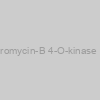 Recombinant E.coli Hygromycin-B 4-O-kinase Protein, His, Yeast-50ug |
|
QP7397-ye-50ug |
EnQuireBio |
50ug |
EUR 576 |
 Recombinant E.coli Hygromycin-B 4-O-kinase Protein, His, Yeast-100ug |
|
QP7397-ye-100ug |
EnQuireBio |
100ug |
EUR 945.6 |
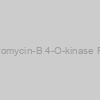 Recombinant E.coli Hygromycin-B 4-O-kinase Protein, His, Yeast-200ug |
|
QP7397-ye-200ug |
EnQuireBio |
200ug |
EUR 1512 |
 Recombinant E.coli Hygromycin-B 4-O-kinase Protein, His, Yeast-500ug |
|
QP7397-ye-500ug |
EnQuireBio |
500ug |
EUR 2164.8 |
 ** shipped on blue ice - must be shipped via overnight service) LEXSY Hygro, Hygromycin B, 1 ml (100 mg/ml) ** shipped on blue ice - must be shipped via overnight service |
|
M-AB-104S |
MiTeGen |
1 ml |
EUR 86 |
|
Description: LEXSY Hygro, Hygromycin B, 1 ml (100 mg/ml) ** shipped on blue ice - must be shipped via overnight service |
 Recombinant E.coli Hygromycin-B 4-O-kinase Protein, His-SUMO, E.coli-1mg |
|
QP7397-ec-1mg |
EnQuireBio |
1mg |
EUR 2763.6 |
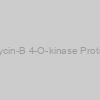 Recombinant E.coli Hygromycin-B 4-O-kinase Protein, His-SUMO, E.coli-100ug |
|
QP7397-ec-100ug |
EnQuireBio |
100ug |
EUR 848.4 |
 Recombinant E.coli Hygromycin-B 4-O-kinase Protein, His-SUMO, E.coli-10ug |
|
QP7397-ec-10ug |
EnQuireBio |
10ug |
EUR 391.2 |
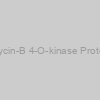 Recombinant E.coli Hygromycin-B 4-O-kinase Protein, His-SUMO, E.coli-200ug |
|
QP7397-ec-200ug |
EnQuireBio |
200ug |
EUR 1338 |
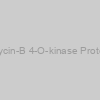 Recombinant E.coli Hygromycin-B 4-O-kinase Protein, His-SUMO, E.coli-500ug |
|
QP7397-ec-500ug |
EnQuireBio |
500ug |
EUR 1816.8 |
 Recombinant E.coli Hygromycin-B 4-O-kinase Protein, His-SUMO, E.coli-50ug |
|
QP7397-ec-50ug |
EnQuireBio |
50ug |
EUR 522 |
 ** shipped on blue ice - must be shipped via overnight service) LEXSY Hygro, Hygromycin B, 5 x 1 ml (100 mg/ml) ** shipped on blue ice - must be shipped via overnight service |
|
M-AB-104L |
MiTeGen |
5 x 1 ml |
EUR 294 |
|
Description: LEXSY Hygro, Hygromycin B, 5 x 1 ml (100 mg/ml) ** shipped on blue ice - must be shipped via overnight service |
 Lentivirus
(Hygromycin), Concentrated Lentivirus) EF1a-(Red-Luciferase) Lentivirus
(Hygromycin), Concentrated Lentivirus |
|
LVP1305-PBS |
GenTarget |
1x10^8 IFU/ml x 200ul |
EUR 455 |
|
Description: concentrated lentivirus in PBS express Red-Luciferease under EF1a promoter, containing Hygromycin selection. |
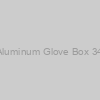 Aluminum Glove Box 34" x 20" w/ spill tray & hygrometer |
|
108CGB24-20 |
Glascol |
each |
EUR 1797 |
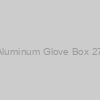 Aluminum Glove Box 27" x 20" w/ spill tray & hygrometer |
|
108CGB27-20 |
Glascol |
each |
EUR 2146 |
 Aluminum Glove Box 34" x 20" w/ spill tray & hygrometer |
|
108CGB34-20 |
Glascol |
each |
EUR 2211 |
) SEAP (EF1a, Hygro) |
|
LVP1200 |
GenTarget |
1x107 IFU/ml x 200ul |
EUR 418.8 |
|
Description: Lentivirus express SEAP under EF1a promoter, containing Hygromycin selection. |
 Hygrolidin |
|
H033-1MG |
TOKU-E |
1 mg |
EUR 207.65 |
|
|
|
Description: C38H58O11 |
 Hygrolidin |
|
H033-5MG |
TOKU-E |
5 mg |
EUR 726.13 |
|
|
|
Description: C38H58O11 |
 in PBS) SEAP (EF1a, Hygro) in PBS |
|
LVP1200-PBS |
GenTarget |
1x107 IFU/ml x 200ul |
EUR 852 |
|
Description: Concentrated Lentivirus express SEAP under EF1a promoter, containing Hygromycin selection. |
) SEAP (TetCMV, Hygro) |
|
LVP1191 |
GenTarget |
1x107 IFU/ml x 200ul |
EUR 418.8 |
|
Description: Lentivirus express SEAP under optional inducible TetCMV promoter, containing Hygromycin selection. |
We identify PIK3CA, RHOA, MAPK3, PAFAY1B1, CTNNB1, MYC, PRKCA, ERBB2, and CDC42 as a key gene on the MIR-375 network which is set and estimates the possible function of the MIR-375 in the heart muscle, which consists mainly in regulations on signaling paths that are dependent on on RHO-GTPases. We apply our algorithm to predict Mirna’s function into the python module, which is available at GitHub.
